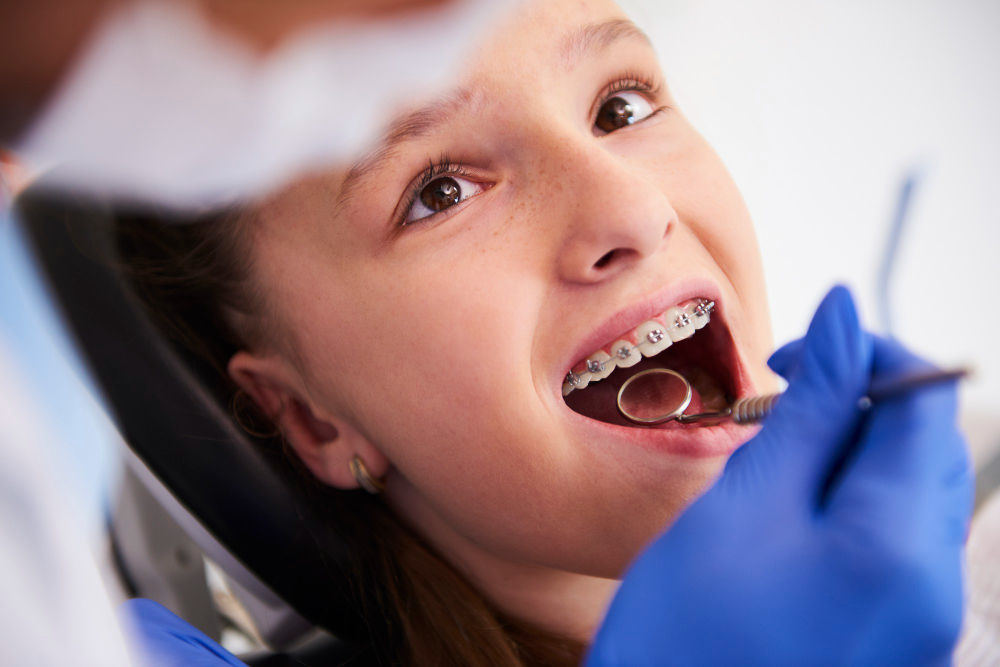Many parents wonder about the right time to start early orthodontic treatment for children. It might surprise you, but starting as early as ages 7-9 can have significant benefits. By tackling potential dental issues early, parents can help their children avoid bigger problems down the road. Proper alignment through early care boosts self-esteem and social interactions. Let’s dive into the details and see how this proactive approach can make a positive difference.
Introduction to Early Orthodontic Treatment
Early orthodontic treatment is all about starting orthodontic care for kids when they’re young, typically between ages 7 and 9. While many associate braces with teenagers, early intervention can offer unique pros of early orthodontic intervention that aren’t available later on.
Why consider early orthodontic treatment? First, addressing issues at a young age can help prevent more serious dental challenges in the future. When children are younger, their jaws are still growing, and their teeth are more adjustable. This flexibility helps dental professionals guide their oral development better.
Another significant reason is the prevention of future dental and health issues. Pushing back treatment can sometimes lead to more complex and costly dental procedures later. On a broader scale, this approach is vital in maintaining overall oral health, which impacts general health, including issues like chewing and digestion.
Beyond physical benefits, early intervention has emotional advantages too. When children receive orthodontic care early, they often feel more confident about their smiles. Confidence can lead to improved social interactions and participation in school and other activities. Imagine a child who’s self-conscious about their teeth transforming into someone who smiles freely and engages with friends easily.
The Multifaceted Benefits of Early Intervention
Let’s explore some benefits of early dental braces and what they can offer for your child.
- Guiding Proper Jaw Development: Starting treatment early helps in guiding the jaws’ growth. This support ensures that the upper and lower jaws grow in harmony, promoting balance and symmetry.
- Preventing Complex Dental Problems: By addressing potential dental issues sooner, early orthodontics often prevents the development of severe dental problems that are harder and more expensive to fix later. So, it’s not only about a beautiful smile but also about health savings.
- Creating Space for Growth: Early orthodontic braces options like retainers can create the space needed for adult teeth to grow in correctly, reducing crowding issues and the risk of injuries related to misaligned teeth.
- Long-term Health and Oral Function: Addressing dental issues early contributes to healthier teeth and gums in the long run. Properly aligned teeth play a crucial role in functions like chewing and speaking.
This preventive orthodontic care also helps solve other problems like speech difficulties and challenges related to eating. For instance, if a child has a lisp due to teeth positioning, early treatment can help alleviate this.
Financially, early treatment often leads to savings since it prevents the need for more complicated treatments. It’s clear that the importance of early orthodontic treatment cannot be overlooked when considering both health benefits and long-term financial impacts.
Beyond Aesthetics: Psychological and Lifestyle Benefits
Now, let’s talk about some of the indirect, yet vital, child orthodontic treatment benefits. Parents often share how orthodontic treatment has transformed their children’s social lives. For example, once shy or withdrawn children become more confident and outgoing when they’re happy with their smiles.
- Better Peer Interactions: Kids with aligned teeth tend to face less teasing, leading to healthier friendships and less bullying. A lovely grin can work wonders in how children interact with their peers.
- Improved Academic Participation: Some parents report that kids with better oral health also perform better academically. There might be a ripple effect from the increased confidence and lessened distraction from dental discomfort.
- Safety in Sports and Activities: Properly aligned teeth are less likely to get injured during physical activities. Real-life stories highlight how kids can participate in sports more safely because of corrected teeth and jaw alignment.
These narratives show that the impact of starting early orthodontic treatment for children goes beyond just physical aesthetics; it enriches their lives emotionally and socially.
Navigating the Path to Your Child’s First Orthodontic Evaluation
When’s the right time to begin? Ideally, an orthodontic evaluation should happen around the age of 7. This allows dentists to spot early signs needing orthodontic treatment in children, like crowded teeth or misalignment that might disrupt their development.
Thanks to advancements, today’s early orthodontic braces options are more comfortable than ever, which means less discomfort for kids.
Steps you might consider include a simple check for misaligned bites or overcrowded teeth. If you notice such problems or if your child complains of discomfort while chewing, it might be time to consult a professional.
An initial orthodontic visit isn’t daunting; it’s a crucial conversation about your child’s dental future. Understanding these aspects can guide parents toward making informed decisions about their child’s oral health.
Child orthodontic treatment benefits extend from improved oral health to broader life enhancements. Starting early paves the way for healthy, happy smiles that children can carry through their lives.
